Tempted by the Firewire Glazer? Here’s my full review of the latest Rob Machado surfboard – including how it compares with the Seaside!
The Firewire Glazer by Rob Machado follows on from the smash hit board the Seaside – which has quickly become one of the best selling boards on the planet.
But does this high volume, thruster setup live up to the hype? Who’s it for? What waves does it excel in?
…and maybe most importantly how does it compare with the Seaside?
REVIEW: Firewire Glazer (Inc Seaside Comparison)
Contents
Who’s It For?
First up, lets chat about who the Firewire Glazer is aimed at.
In terms of board category it sits above a groveller, but still isn’t a full performance shortboard and it’s one of those boards that can suit a few different styles and level of surfer.
Overall it’s a board that will help transitioning from a groveller style board to something with a bit more performance, or for those moving down from something longer towards the shortboard style, due to the extra volume it packs in.
It’s also a really good option for surfer who may not have performance style skills when it comes to things like big hacks, but can handle themselves in bigger surf conditions already.
For higher end surfers it’s one of those options that allows you to drop some length, much like you would with a fish.
So yeah, it ticks a few boxes for a few different surfers!
Board Breakdown & Dimensions
In terms of the board dimensions and tech specs, the Firewire Glazer is a pretty high volume shortboard, running from 5’2 at 27.6L right through to a 6’1 model packing in 45.3L
 At 185cm and 85kg I opted for the 5’8 version – I could get away with the 5’7, but as I’ve chatted about before I do like a bit of extra foam underneath me and the general recommendation on the Glazer is add a few extra litres on your standard shortboard.
At 185cm and 85kg I opted for the 5’8 version – I could get away with the 5’7, but as I’ve chatted about before I do like a bit of extra foam underneath me and the general recommendation on the Glazer is add a few extra litres on your standard shortboard.
When it comes to the breakdown of the contours of the board, the Glazer has a good amount of volume under the chest for paddle power – with the wide point being just past the centre of the board.
It has medium entry and medium exit rocker, which coupled with a single to double concave – which gets pretty aggressive running through the back fin box – really ups to the tempo in terms of performance.
Add in the nice rounded tail and you get the potential for some really smooth transitions with lots of flow.

What Wave Size Does It Suit?
 Now given the outline and volume of the Glazer you’d be forgiven if you thought it was a grovellor style shortboard. However this isn’t the case.
Now given the outline and volume of the Glazer you’d be forgiven if you thought it was a grovellor style shortboard. However this isn’t the case.
In fact in smaller, weaker surf you’re going to have to really put in the effort to keep your speed, part of which comes down to the LFT construction, which we’ll chat about in a bit.
Ideally the Firewire Glazer is suited for chest to overhead waves.
If you are looking for small wave board I’d suggest something like the Seaside, DHD Phoenix, Puddle Jumper HP or even the Dominator 2 – all of which perform really well in sub par conditions as well as more pumping waves too.
LFT Construction
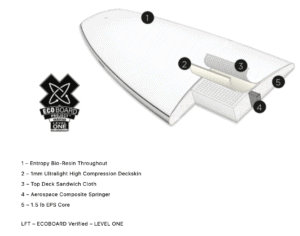 Unlike the Seaside (which came in Helium tech) the Glazer comes in Firewires other epoxy construction – LFT.
Unlike the Seaside (which came in Helium tech) the Glazer comes in Firewires other epoxy construction – LFT.
With a central aerospace composite running through the board it acts as a stringer – and much like a fibreglass board it flexes around this – as opposed to Helium which flexes around the rail of the board.
Personally I find the LFT heavier and certainly less durable than Helium (I managed to put a ding in my board on the first surf after landing on it during a bail!), but it does seem to be Firewires go to for boards that need bigger or punchier conditions.
Glazer Or The Seaside?
 So the quickest comparison people are going to be making (or buying decision!) is the Glazer v the Firewire Seaside…which is one of my all time favourite surfboards! Checkout my full review of the Seaside here.
So the quickest comparison people are going to be making (or buying decision!) is the Glazer v the Firewire Seaside…which is one of my all time favourite surfboards! Checkout my full review of the Seaside here.
I can see why people would want to compare the two, but they’re pretty chalk and cheese when you boil it down!
Quad v thruster, LFT v Helium, fish v round tail – they’re both pretty different boards.
My personal preference out of the two is hands down the Seaside, it just felt better under my feet and also had the added advantage of being able to make the most of smaller conditions too.
Overall the Seaside just felt better and brought more fun to my sessions, so if you’re asking for my personal opinion – I’d choose the Seaside over the Glazer every-time.
My Final Thoughts
After the sheer amount of fun I had on the Seaside I had high hopes for the Firewire Glazer – however I have to admit that for me, it fell a bit short of expectation.
I just didn’t really gel with it.
When I was surfing the board I really felt like I was constantly working the board to get where I wanted to be and do what I wanted to do. In comparison, with the Seaside or – even the Firewire Dominator 2 – I felt the boards did a lot of that work, especially when it came to generating and maintaining speed.
I’m sure for a lot of people the Glazer will suit their style and have a spot in their quiver – however I’m hard pushed to figure out when I’d be grabbing it over the rest of my quiver and I’ll certainly be recommending the Dominator 2 over it if anyone asks.


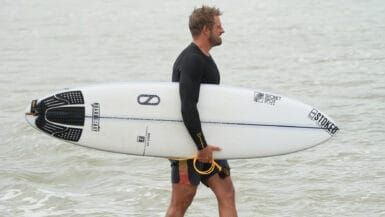
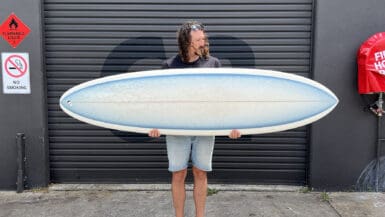
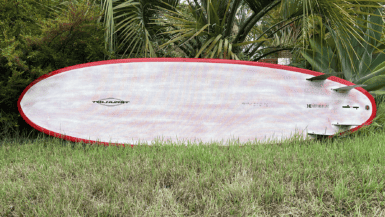
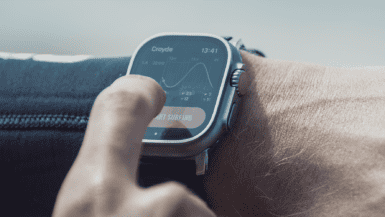
Leave a reply